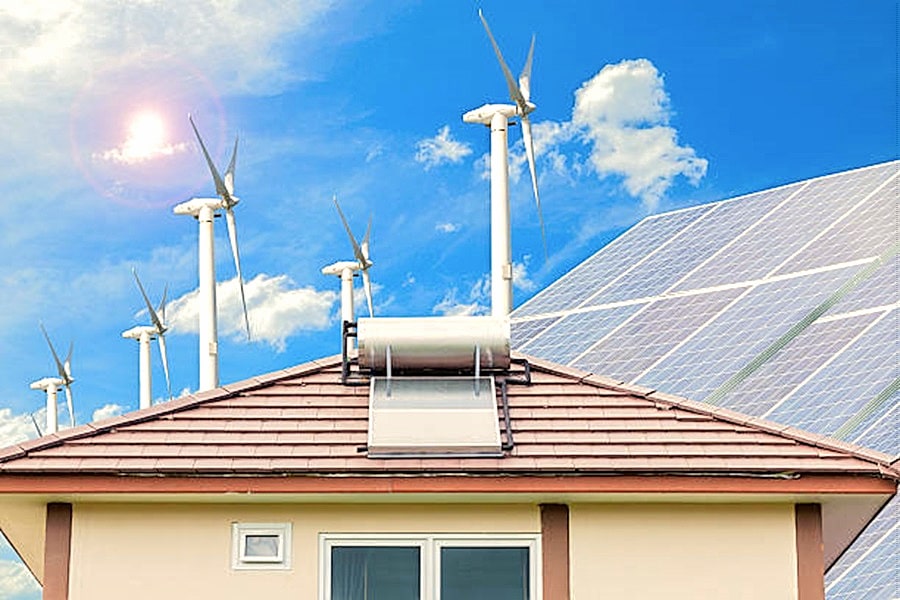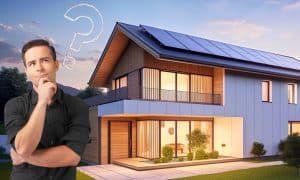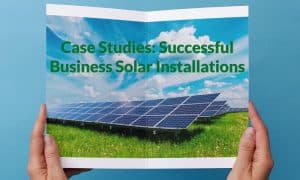Australia is a leader in solar energy adoption, with sunshine being a readily available resource. However, the nation’s renewable energy ambitions are taking a big step forward by integrating wind power into existing solar systems. This hybrid approach offers a win-win situation, boosting energy security and reliability while maximising the potential of renewable sources.
Why consider wind-solar integration?
Solar panels and wind turbines have complementary generation patterns. Solar shines brightest during the day, perfectly aligning with peak household electricity demand. Conversely, wind can be stronger in the evenings and early mornings, filling the gaps when solar production dips. This synergy creates a more consistent and reliable power source, reducing dependence on the grid, especially during peak demand periods.
Here are some key benefits of integrating wind and solar
- Increased energy production: With solar and wind, you can generate power for a longer period throughout the day and night, reducing your dependence on the grid, especially during peak demand times.
- Enhanced reliability: Wind and solar sometimes consistently generate power. When the sun isn’t shining, or the wind is blowing, the other source can pick up the slack, providing a more reliable and balanced energy flow.
- Reduced emissions: Adding wind power further minimises your reliance on fossil fuels, leading to a smaller carbon footprint and contributing to Australia’s renewable energy goals.
- Potential cost savings: You can save on electricity bills with less reliance on the grid. Additionally, some government incentives may exist to encourage wind-solar integration.
Types of wind-solar integration systems
There are two main approaches to integrating wind power with your existing solar system:
- Grid-connected systems: These systems remain connected to the electricity grid. Excess energy from your combined wind and solar can be exported to the grid for credits. At the same time, you can draw power from the grid when your renewable sources aren’t producing enough.
- Off-grid systems: These systems are completely independent of the electricity grid and are suitable for remote locations. However, they require a larger battery bank to store excess energy during low wind and sun.
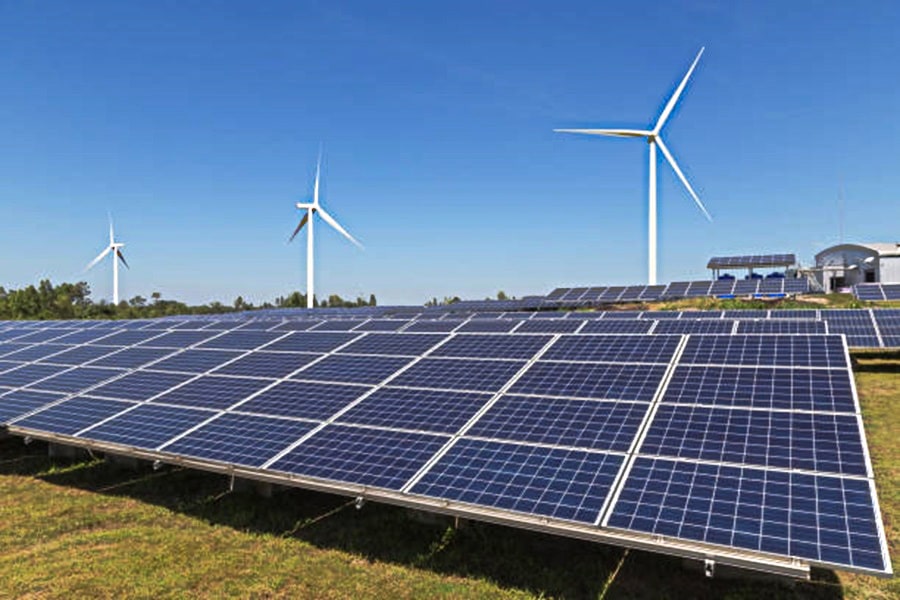
Other approaches to wind and solar Integration
There are several other ways to integrate wind and solar in Australia:
- Hybrid power plants: Building large-scale wind farms co-located with solar arrays is a proven approach. Australia’s Snowtown 2 Wind Farm and Gullen Solar Farm showcase this successful model.
- Distributed Energy Systems: Integrating wind turbines with existing rooftop solar systems can be viable for some homes and businesses, particularly in remote areas.
- Virtual Power Plants (VPPs): These networks connect multiple distributed renewable energy sources, including solar and wind, to act as a single, dispatchable power source for the grid.
Are you looking to save extra money with your Sungrow, GoodWe, or Tesla Powerwall 2 solar battery installed? Origin and Energy Matters have teamed up to provide customers with an additional way to save and make money!
Remember, the best approach for you will depend on your specific energy needs, location, and budget.
Existing options in Australia
Australia is paving the way for wind-solar integration. Pioneering projects like the Gullen Solar Farm in NSW combine wind and solar for large-scale energy generation. Even for homes with existing solar, options are emerging:
- Hybrid inverters: These can handle solar and wind inputs, managing the combined energy flow.
- Small wind turbines: Smaller wind turbines can be integrated with existing solar systems for residential applications.
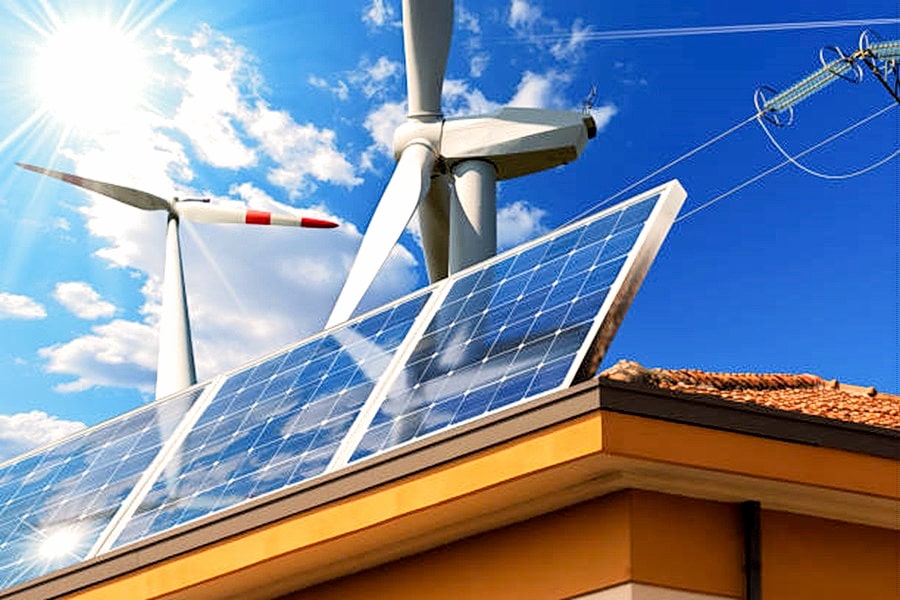
Power your home or business with the sunshine above and the wind at your back! Ditch the grid or off-grid and embrace clean energy independence with a customised solar + wind + battery storage system.
Energy Matters connects you with 3 FREE solar quotes from local, vetted installers, ensuring you get the perfect fit and the best price. Click today and unlock the future of energy!
Technical considerations for integration
Adding wind power to your existing solar system involves some technical considerations:
1. Permits and regulations
Installing a wind turbine may require obtaining permits from your local council. Ensure you comply with all relevant regulations and zoning restrictions.
2. Financial considerations
Research available government incentives and factor in equipment cost, installation, and ongoing maintenance. Consider your payback period and the potential for long-term cost savings.
The upfront cost of integrating wind power can be higher than expanding your solar system alone. However, there are potential financial benefits to consider:
- Government Incentives: The Australian government offers various incentives for renewable energy installations, including rebates and feed-in tariffs for exporting excess solar and wind power back to the grid. Explore resources from the Australian Renewable Energy Agency (ARENA) for current programs.
The ARENA supports research, development, and demonstration projects for integrating renewable energy sources. Additionally, several state governments have ambitious renewable energy targets that could drive further integration efforts.
- Long-term savings: While the initial investment might be higher, the potential reduction in your electricity bills and increased energy independence can lead to significant savings over time.
3. Wind turbine selection
The wind turbine size and type depend on wind resource availability and desired power output. Smaller, micro-wind turbines are suitable for some residential applications, while larger turbines might be better suited for commercial or agricultural properties.
4. Inverter compatibility
A standard solar inverter might not be compatible with a wind turbine. You may need a hybrid inverter that can handle AC (alternating current) from solar panels and DC (direct current) from the wind turbine.
5. Battery storage
If you plan to store excess energy for later use, you will need a battery bank with sufficient capacity. Battery technology constantly evolves, so consult a qualified solar and wind installer to determine the best option.
Conduct a thorough cost-benefit analysis with a qualified installer to determine if wind-solar integration is a financially viable option for you.
Embrace the energy efficiency revolution by upgrading your solar systems and adding a battery or solar inverters with Energy Matters.
The road ahead
Integrating wind and solar represents a significant step towards Australia’s clean and reliable energy future. While technical and regulatory hurdles exist, technological advancements and increasing awareness make hybrid systems more viable. Australians can create a more sustainable and secure energy landscape by harnessing the sun’s and wind’s combined power.
Note: It is recommended that you consult with a qualified renewable energy professional for detailed information on regulations and specific products.
Ready to upgrade your solar panels and take your energy savings to the next level? With our 3 free solar quotes, you can compare plans from pre-qualified and vetted installers in your area and find the perfect solution for your home and business. Harness the sun’s power and save money on electricity bills while reducing environmental impact. Let Energy Matters guide you towards a brighter, more sustainable future.
Our Energy Matters CEO, Roshan Ramnarain will feature stunning homes installed with the latest solar technology every Saturday at 5:00 p.m. on Open Homes Australia on the 9Life channel. Be sure to watch this show; you won’t want to miss it!












